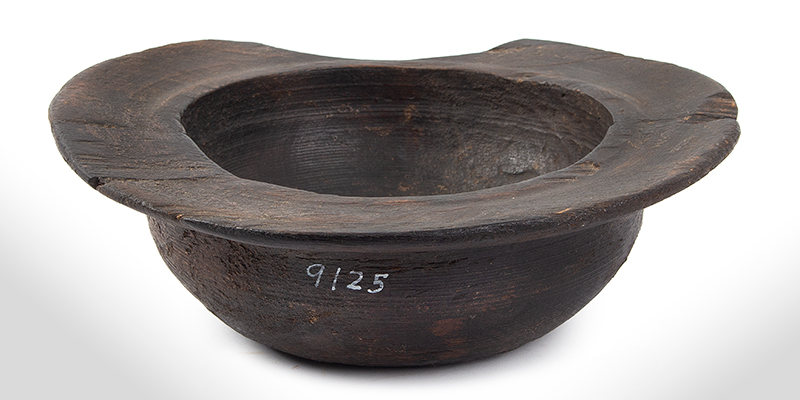


Probably England

A rare survivor considering that the majority of those extant are pewter, brass, silver, and glazed earthenware. This example was turned on a pole lathe.
Edward H. Pinto suggests in his book Treen and other wooden bygones, pp. 13 and 14 that most survivors are probably of the 17th or early 18th century; they could be earlier. Albeit known as barbers’ bowls… they were not necessarily made for shaving. Pinto discusses phlebotomy including the origin of barber poles.
Item Date: 17th or early 18th Century
Measurement: Width: 8.5"; depth: 7.75"; height: 3"
Material: ood, can't see grain through dark stain and patina
Item Condition: Commensurate with age and use; small, restored chip to rim, displays well
SOLD
SKU 673-54
For More Information, Please Contact David Hillier at 978-597-8084 or email drh@aaawt.com.
Please click on images to expand.